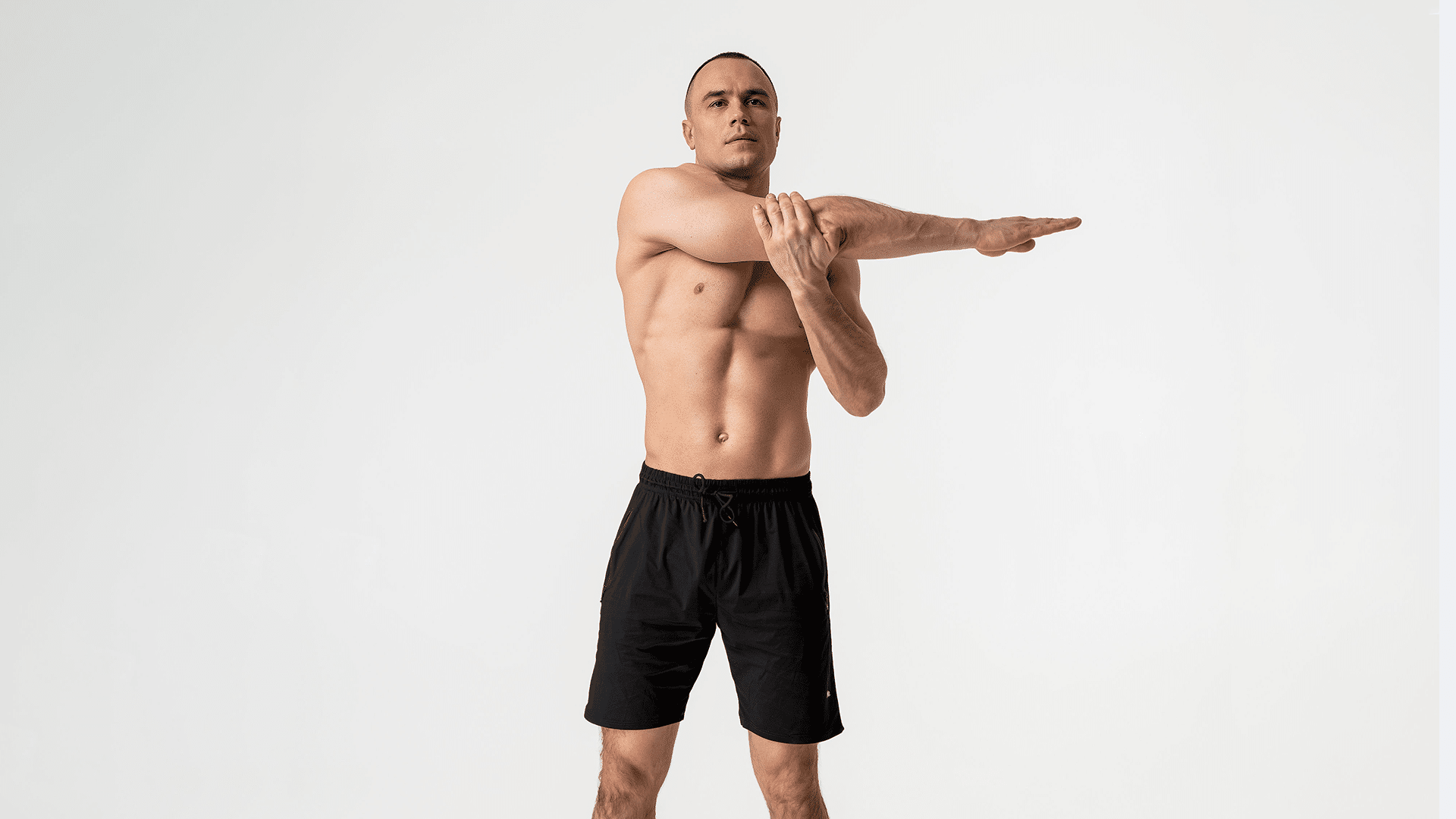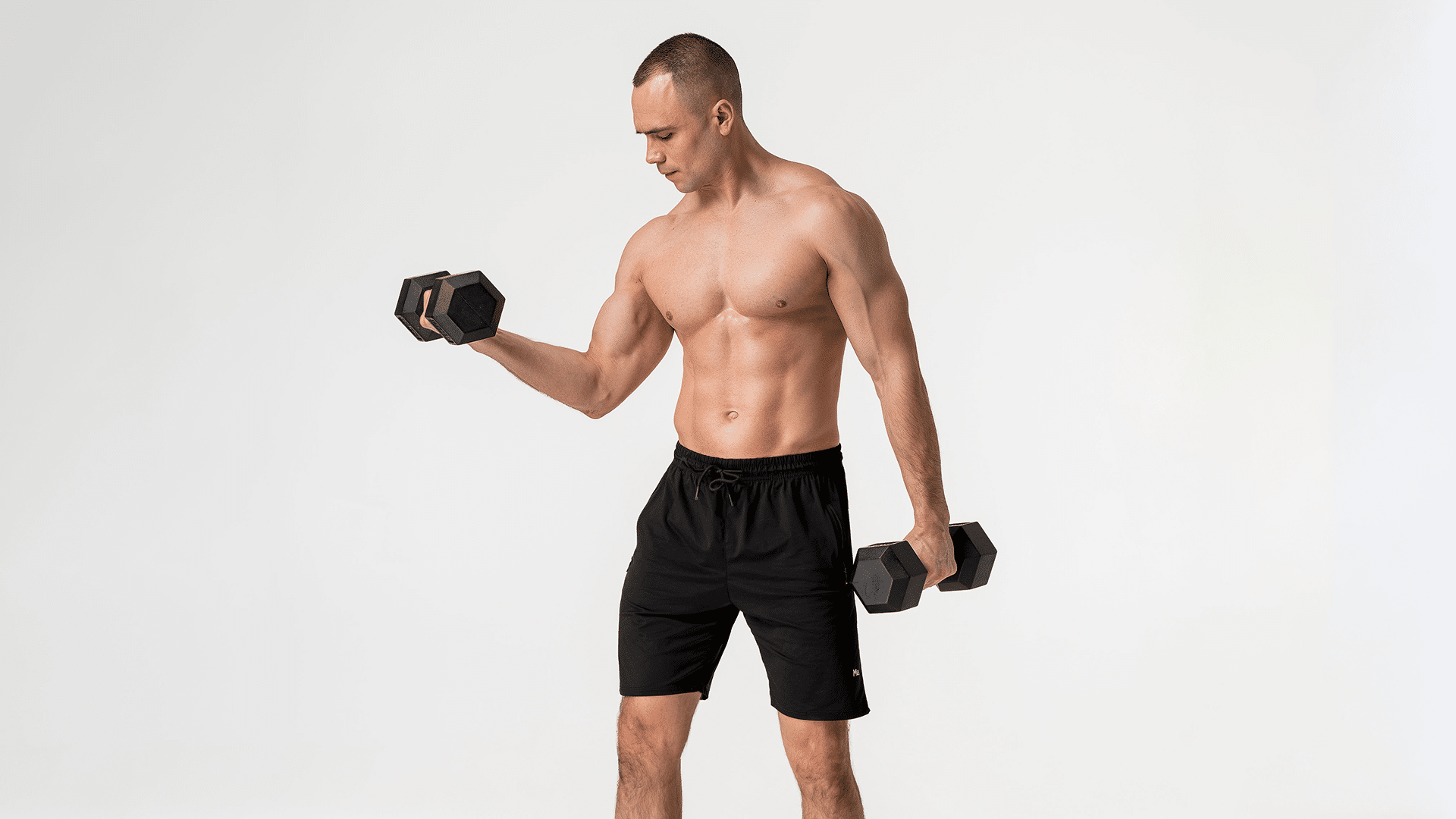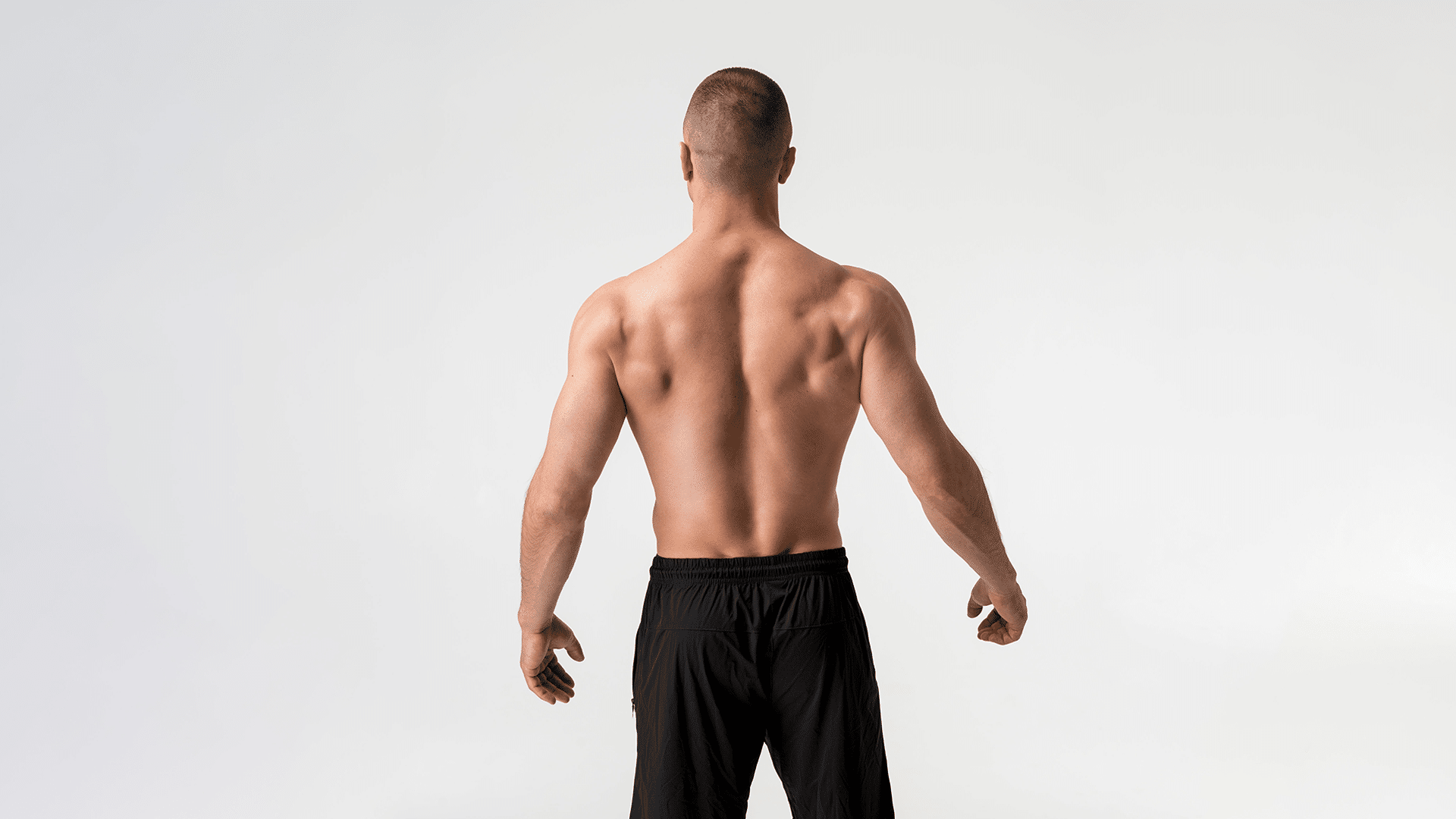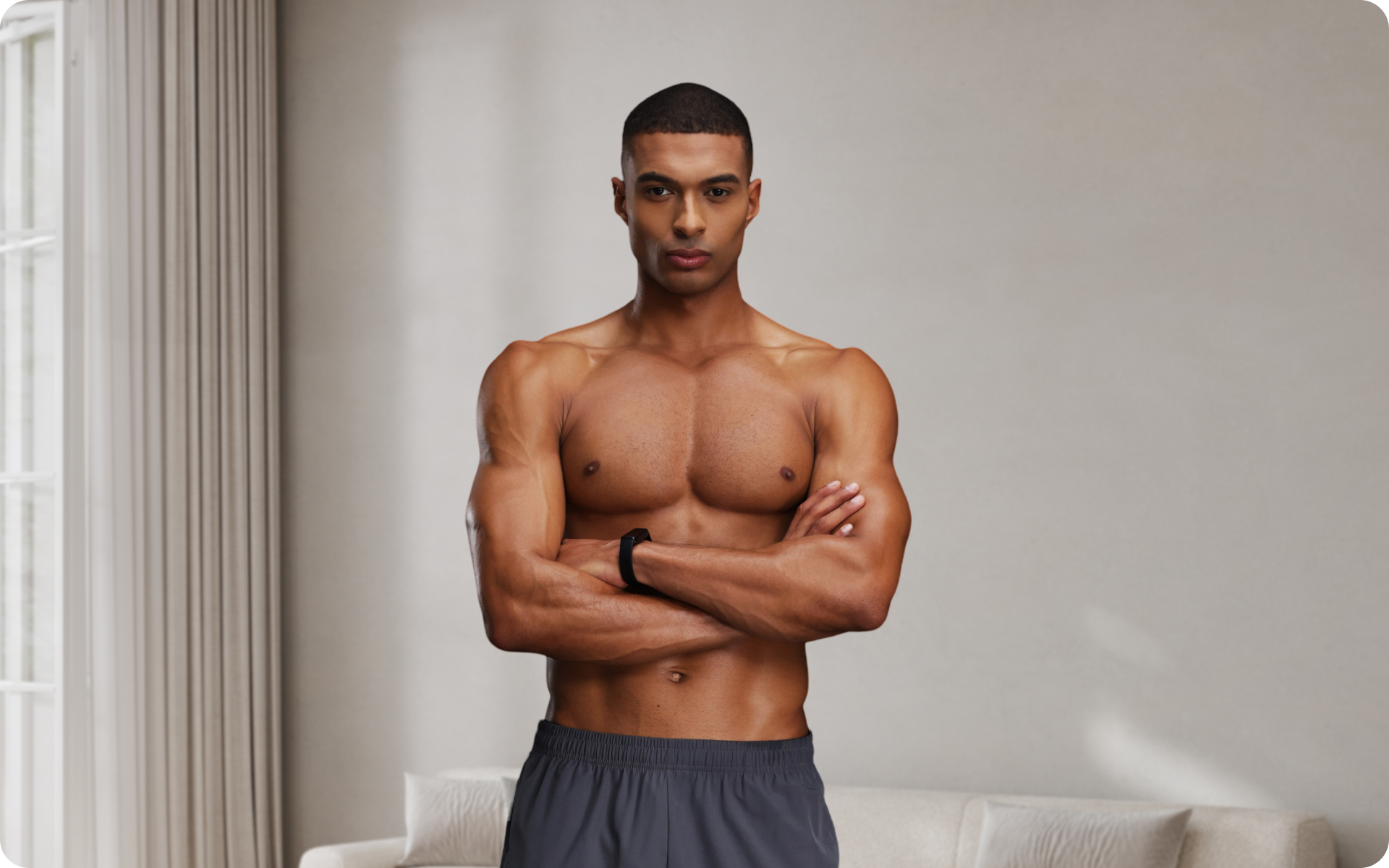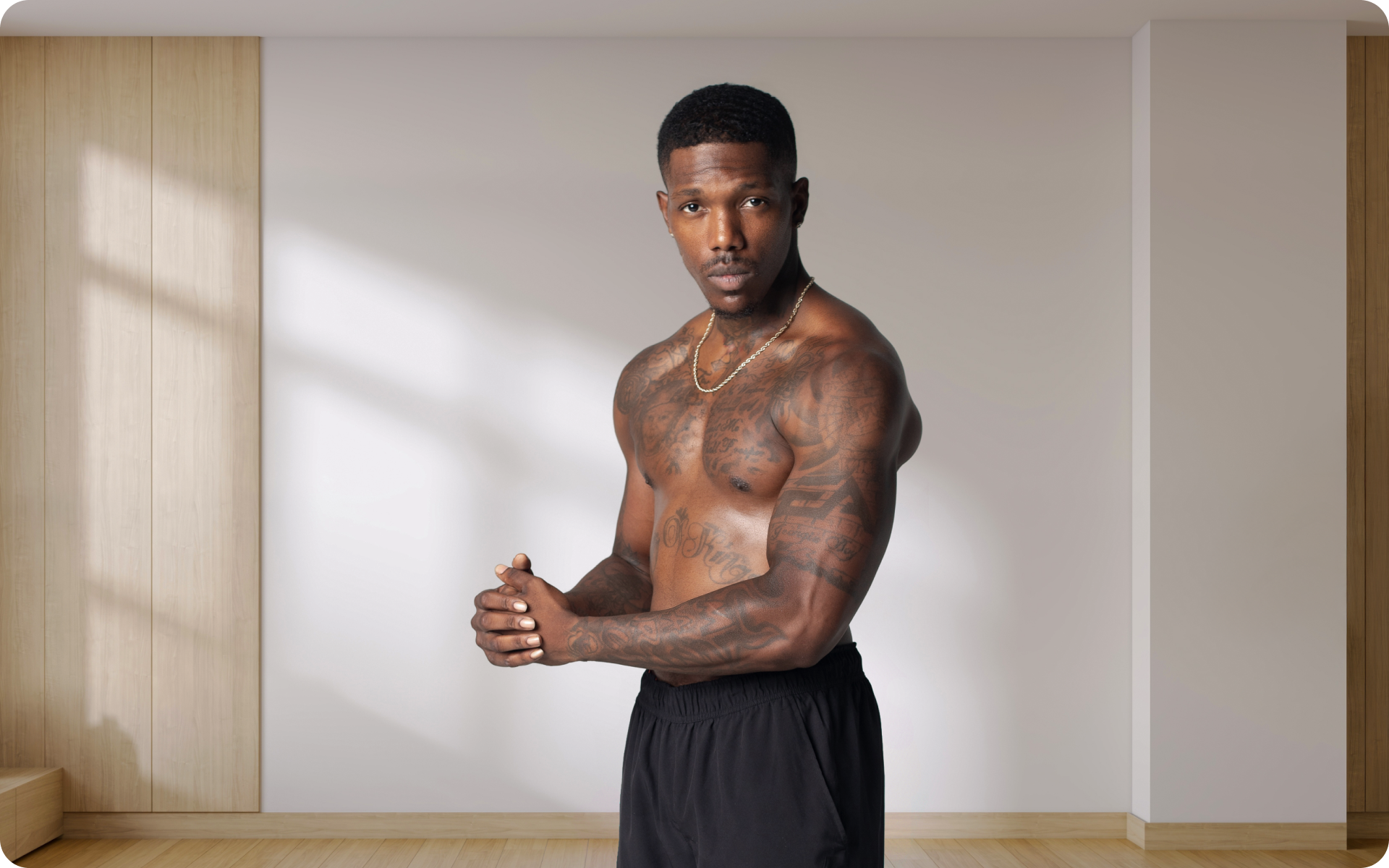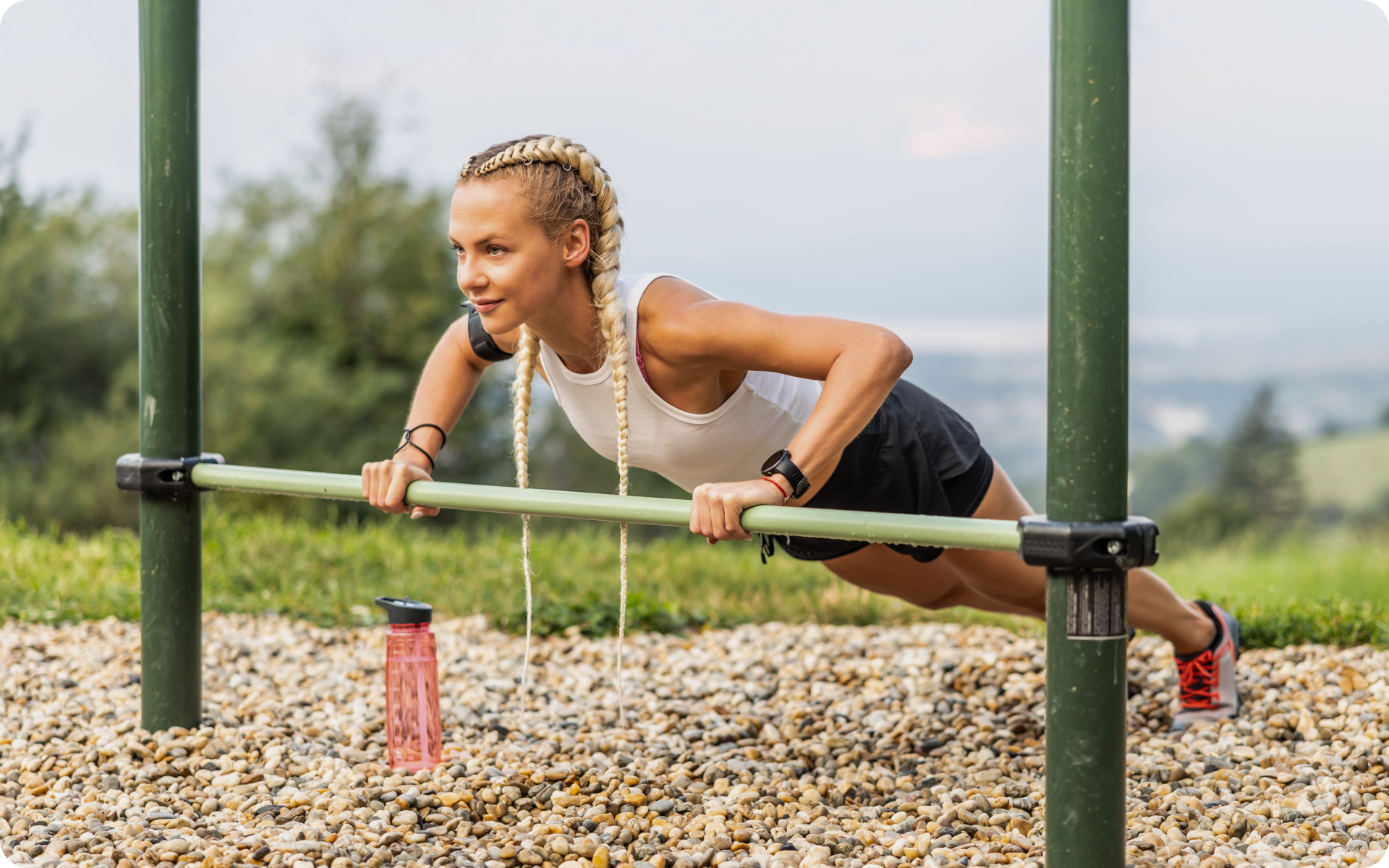Using your body as the primary tool for exercise is one of the simplest and most rewarding ways you could use to change your health.
Bodyweight exercises have many advantages, the most significant being accessibility. Without the need for expensive equipment or gym memberships, anyone can engage in calisthenics to improve their fitness levels (4).
Beyond the convenience, there’s some inherent functionality to training with movements that replicate everyday actions.
Here are some of the best exercises to incorporate into a comprehensive calisthenic routine, whether you’re at home, in the park, or on the go.
This kind of workout can not only build strength and endurance but also enhance flexibility and coordination, all while using just the weight of your own body.
What Is The Best Workout Routine for Calisthenics?
The best workout routine for calisthenics is one that can be customized to fit the individual’s specific goals and fitness level.
It should also include a variety of exercises that target different muscle groups and incorporate both strength and cardio elements (5).
A well-rounded calisthenics routine will challenge the body in multiple ways, leading to overall functional fitness.
Our blog on an intro to calisthenics will make starting your calisthenics journey as easy as possible.
9 Advanced Calisthenics Exercises
In your calisthenics workout plan you should include a mix of upper body, lower body, and core exercises. Here are 9 essential calisthenics exercises that cover all three areas:
Toes to Bar
Engaging mostly the core muscles, specifically the rectus abdominis, the obliques, and also the hip flexors, Toes to Bar is an excellent exercise for developing abdominal strength and control. Secondary muscle involvement includes the latissimus dorsi and forearm flexors, which are crucial for maintaining grip on the bar. This exercise is particularly functional for enhancing grip strength and stability, vital for tasks involving lifting and holding.
How to perform Toes to Bar:
- Hang from a pull-up bar with an overhand grip, slightly wider than shoulder width apart.
- With arms and legs straight, engage your core and use your abs to lift your toes up towards the bar, keeping legs straight.
- Try to touch the bar with your toes before lowering back down in a controlled manner.
Pistol Squat
The Pistol Squat is a complex lower body exercise that targets the quadriceps, glutes, and hamstrings in a major way. It also engages the core muscles for balance and the lower leg muscles, particularly the calf muscles and the ankle stabilizers, in a minor yet significant capacity.
The exercise aids in developing unilateral strength and balance, which can have direct benefits in activities that require strong and stable lower body coordination, such as running and jumping.
How to perform Pistol Squat:
- Stand on one leg, with the other leg extended straight in front of you.
- Extend your arms straight out for balance.
- Lower your body slowly into a single-leg squat on the standing leg, going as low as you can while keeping the other leg off the ground.
- Push back up to the starting position, maintaining balance and control.
If you tend to let yourself off the hook, raise the white flag when things get tougher than you expected, send yourself on an unconscious binge-eating trip – BetterMe app is here to help you leave all of these sabotaging habits in the past!
V-Sit
The V-Sit is a powerful core exercise, targeting primarily the rectus abdominis and challenging the obliques.
In addition, this movement enlists the hip flexors and the muscles of the upper thigh. V-Sit progressions enhance core stability and improve the balance necessary for sports and everyday activities that require a strong, central anchor for movement.
How to perform V-Sit:
- Sit on the floor with legs extended and arms reaching forward.
- Lean back slightly and lift your feet off the floor, keeping them together.
- Balance on your sit bones and extend your legs up to form a V-shape with your body.
- Hold the position, starting with a few seconds and progressing to longer as you gain strength.
Jump Squats
The Jump Squat primarily recruits the muscles of the quadriceps, glutes, hamstrings and calves.
This exercise showcases your lower body strength and power, while also emphasizing cardiorespiratory fitness.
How to perform Jump Squat:
- Stand with feet shoulder-width apart.
- Lower yourself into a squat by sitting your hips back and bending at the knees.
- Once you have reached the lowest position of your squat, jump up, powering up to standing and landing on your feet.
- As you land on your feet, allow gravity and momentum to lower you into the next squat rep in a controlled manner.
- Continue these jump squat reps for time, aiming for 30 seconds.
Atomic Push-ups
Atomic Push-ups are a progression of the classic push-up that combines the traditional push-up with the core crushing knee tuck. This exercise intensely targets your pectoral muscles, triceps, and deltoids as the primary movers.
The rectus abdominis, obliques, and hip flexors are engaged as you bring your knees in towards your chest, making it a stellar full-body workout. Atomic Push-ups enhance the functional strength required for pushing movements in everyday life and are great for boosting overall muscular endurance.
How to perform Atomic Push-ups:
- Start in a standard push-up position with your feet on sliders or in suspension straps.
- Lower your chest to the ground to perform a push-up.
- As you push back up, draw your knees towards your chest, sliding or pulling your feet in.
- Extend your legs back to the start position and repeat the combined movement.
Australian Pull-ups
Also known as body rows or inverted rows, Australian Pull-ups focus on the upper back muscles, namely the latissimus dorsi, trapezius muscles, and the rhomboids. Your biceps, forearms, and rear deltoids get a solid workout, too.
It’s a fantastic pulling exercise that’s essential to balance the pushing movements in your routine and is particularly functional for postural improvement and for activities requiring pulling strength.
How to perform Australian Pull-ups:
- Set a bar at waist height on a Smith machine or a sturdy bar in a rack.
- Lie underneath the bar, grabbing it with a wide overhand grip.
- Straighten your body and dig your heels into the ground.
- Pull your body up towards the bar until your chest touches the bar.
- Lower yourself back down in a controlled manner and repeat.
Around The World
Around The World is a dynamic bodyweight exercise that primarily targets your core muscles, including the rectus abdominis, obliques, and the hip flexors, with a unique movement pattern that engages your entire core.
Your upper body—shoulders, chest, and back—also get involved, making it a comprehensive exercise. This movement is especially useful for enhancing core mobility and the functional strength needed for rotational movements in sports and daily tasks.
How to perform Around The World:
- Start in a standard plank position with your arms extended directly below your shoulders.
- Lift one arm and back down, then the other arm back down.
- Then move to legs lifting one leg off the ground and back down, then the other leg up and back down..
- Continue this pattern of lifting limbs in a clockwise or counterclockwise direction around your body in a fluid, controlled manner.
Read more: The Simplest Lower Back Calisthenics Guide for Beginners
Front Lever
The Front Lever is a challenging bodyweight exercise that significantly engages the upper body and core muscles. The primary muscle groups involved include the latissimus dorsi, which work to maintain body tension, along with the abdominals, especially the rectus abdominis.
The biceps, deltoids, and forearms act as stabilizers throughout the hold. This exercise is beneficial for developing incredible core strength and stability, as well as upper body pulling power, which is useful in gymnastics, rock climbing, and other athletic endeavors.
How to perform Front Lever:
- Begin by hanging from a pull-up bar with an overhand grip.
- Engage your core and start to lift your legs up while keeping them straight.
- Continue to raise your legs until your body is parallel to the ground, forming a straight line from head to toe.
- Retain this horizontal position, striving for a solid body line, with your arms straight and your core tight.
- Hold for a few seconds then lower back to the hanging position and repeat, building up time and strength in the position each session.
Handstand Push-Up
The Handstand Push-Up is an advanced exercise that primarily targets the shoulder muscles, particularly the anterior deltoids, along with the lateral and posterior deltoids. The triceps work as secondary muscles by controlling the elbow extension during the push-up phase.
The core muscles are also significantly engaged to maintain the handstand position, offering overall improvement in balance and upper body strength. This exercise simulates an overhead press in an inverted position, which can be quite beneficial for improving performance in overhead lifting and stability for athletes and fitness enthusiasts.
How to perform Handstand Push-Up:
- Kick up into a handstand against a wall for support, with your hands placed about shoulder-width apart.
- Plant your palms firmly on the ground, engage your core, and keep your body straight.
- Lower your head down towards the floor by bending your elbows.
- Push back up through your hands, extending your arms fully while maintaining a tight core and controlled breathing.
- Repeat the push-up motion while keeping your body as steady as possible.
What Is a Good Calisthenics Workout for Beginners?
A good calisthenics workout for beginners focuses on fundamental movements that build the foundation for more advanced exercises. To start, one could follow a simple routine that includes push-ups, squats, lunges, and planks. This structure provides a full-body workout that improves strength and endurance, without the need for equipment.
BetterMe app is a foolproof way to go from zero to a weight loss hero in a safe and sustainable way! What are you waiting for? Start transforming your body now!
Is Calisthenics Good for Weight Loss?
Yes, calisthenics is excellent for weight loss as it involves large muscle groups, which can help raise your heart rate and burn calories (1). Integrating high-intensity intervals with calisthenics exercises can create an effective workout for shedding pounds and increasing cardiorespiratory fitness.
Read: how you can get that dream body, in our calisthenics body type blog.
Can You Build Muscle With Only Calisthenics?
Certainly, you can build muscle with only calisthenics. The best approach is to consistently challenge your muscles with progressive overload—by increasing reps, adding more challenging variations, or performing exercises slower (3). Calisthenics exercises, such as pull-ups and dips, are particularly effective for muscle growth and strength.
Our, does calisthenics build muscle article, explains how calisthenics builds muscle in detail.
Is 20 Minutes of Calisthenics Enough?
Yes, 20 minutes of calisthenics can be sufficient if you maintain a high intensity and minimize rest between sets. This method is particularly effective for those looking for a good calisthenics workout at home when they’re short on time but still want to achieve a full-body workout.
Can You Get Ripped from Calisthenics?
Absolutely, one can get ripped from calisthenics as it involves bodyweight exercises that enhance muscular definition by combining strength and endurance training (4). A calisthenics workout plan that progressively increases in intensity, combined with proper nutrition, can lead to a lean, toned physique.
Read more: Calisthenics Shoulder Exercises: Techniques and Workouts
FAQs
Can You Do Calisthenics Without Equipment?
Yes, calisthenics can be effectively performed without any equipment. This form of exercise relies on bodyweight for resistance and includes movements that increase strength, flexibility, and endurance (4).
A good calisthenics workout for beginners might simply involve foundational exercises such as push-ups, squats, and planks that do not require any special equipment and can be done anywhere, from the comfort of your home to at a park.
Is Calisthenics Better Than Gym?
It is not a matter of being better, but rather what suits your goals and preferences. Calisthenics provides the convenience of a good calisthenics workout at home and the potential for high levels of functional fitness, mobility, and body control.
On the other hand, the gym might offer more variety with weight training for targeted muscle growth. Both can yield excellent results, and often, a combination of both can provide a balanced approach to fitness.
Is It Ok To Do Calisthenics Everyday?
Yes, it is generally okay to do some form of calisthenics every day if you’re rotating the muscle groups working and allowing 1-2 days rest between working the same muscle group. Rest is crucial for muscle recovery, so a more intense calisthenics workout plan might necessitate days of rest or lighter activity (2).
For beginners, a 30-day calisthenics workout plan for beginners might include rest days to help avoid overtraining. Regularly engaging in a calisthenics workout challenge will help boost endurance and strength when followed responsibly.
The Bottom Line
A good calisthenics workout offers numerous benefits, including increased strength, muscle growth, weight loss, and improved overall fitness. By mastering foundational movements and continuously challenging yourself with progressive overload, you can see significant progress and reach your goals.
DISCLAIMER:
This article is intended for general informational purposes only and does not serve to address individual circumstances. It is not a substitute for professional advice or help and should not be relied on for making any kind of decision-making. Any action taken as a direct or indirect result of the information in this article is entirely at your own risk and is your sole responsibility.
BetterMe, its content staff, and its medical advisors accept no responsibility for inaccuracies, errors, misstatements, inconsistencies, or omissions and specifically disclaim any liability, loss or risk, personal, professional or otherwise, which may be incurred as a consequence, directly or indirectly, of the use and/or application of any content.
You should always seek the advice of your physician or other qualified health provider with any questions you may have regarding a medical condition or your specific situation. Never disregard professional medical advice or delay seeking it because of BetterMe content. If you suspect or think you may have a medical emergency, call your doctor.
SOURCES:
- Energy expenditure and heart rate response to breaking up sedentary time with three different physical activity interventions (2015,nih.gov)
- Effects of Consecutive Versus Non-consecutive Days of Resistance Training on Strength, Body Composition, and Red Blood Cells (2018,nih.gov)
- Progression of volume load and muscular adaptation during resistance exercise (2010,nih.gov)
- The advantages of body-weight exercise (2012,harvard.edu)
- The benefits of adding cross training to your exercise routine (2018,msu.edu)

